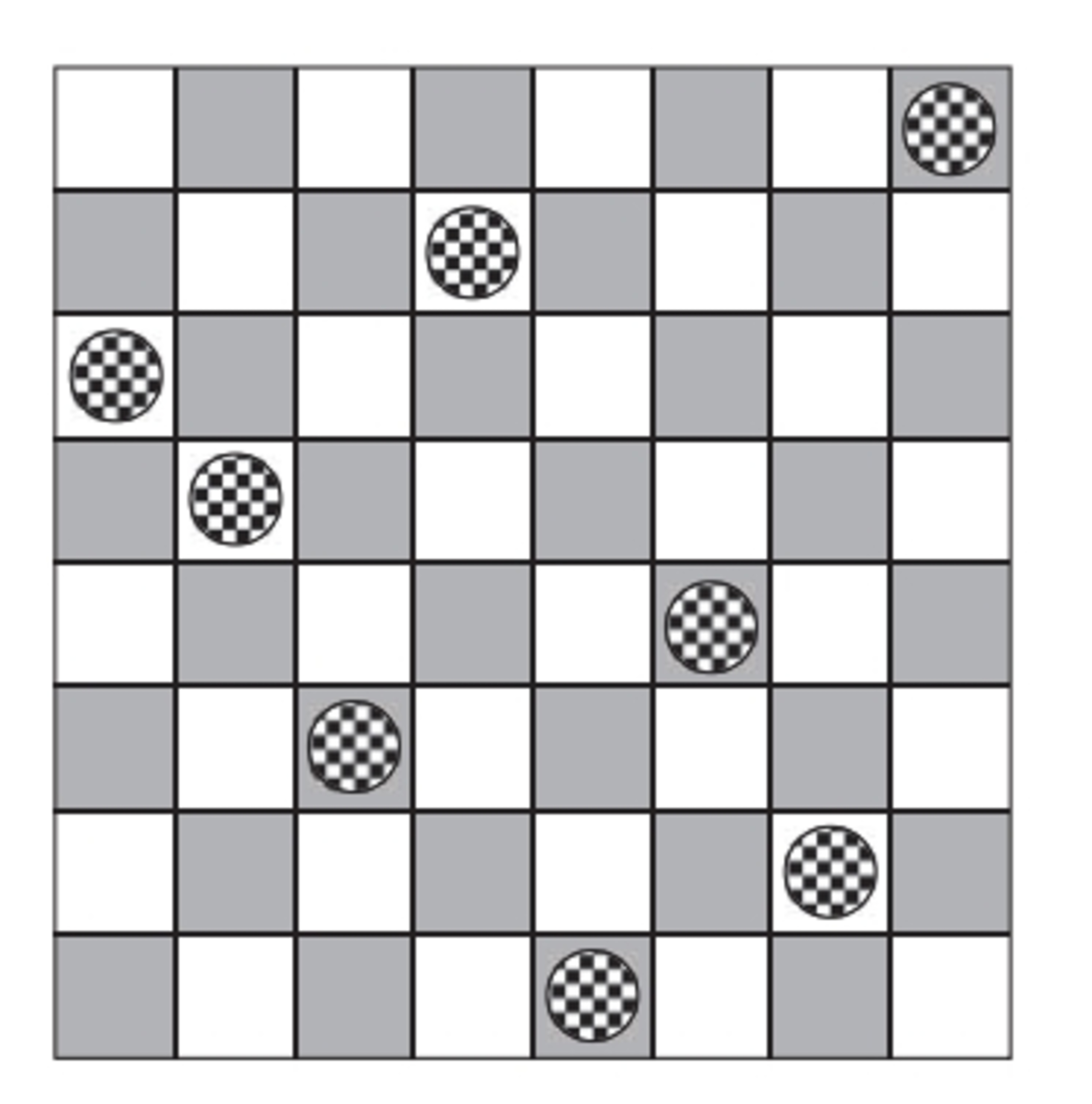Arrangement of Counters-III

Find the number of different ways 8 red and 8 green counters can be placed on the squares of an chessboard so that
-
there are not two counters on any one square, and
-
there is exactly one red counter and exactly one green counter in each row and column.
Assume that we ignore the symmetries (if there is any) of the board.
The answer is 598066560.
This section requires Javascript.
You are seeing this because something didn't load right. We suggest you, (a) try
refreshing the page, (b) enabling javascript if it is disabled on your browser and,
finally, (c)
loading the
non-javascript version of this page
. We're sorry about the hassle.
One way this problem can be solved is using the inclusion-exclusion principle, which involves accounting for different components of the problem separately and then removing repeat solutions later. Let us start by generalizing the problem to consider r rows.
You can start the problem by considering the number of ways to place a single counter of one color in each row and column. With each counter you add to the board, one row (or column, depending on whether you are moving vertically or horizontally) will be removed. Thus, the number of ways to place counters in each row is r ( r − 1 ) ( r − 2 ) … ( 3 ) ( 2 ) ( 1 ) = r ! . When there are two counters, each of the r ! ways to place the first counter will have its own set of r ! ways to place the second. So, leaving aside the requirement that no two counter may share a square, there are r ! 2 ways to place the red and green counters on the board.
Assume that there are at least n rows where overlap occurs. Since each row is identical beyond the placement of the counters, we can treat the number of ways to grab n rows as ( n r ) = n ! ( r − n ) ! r ! . When looking at where the counters are placed in each of the n rows, there are r ( r − 1 ) ( r − 2 ) … ( n + 3 ) ( n + 2 ) ( n + 1 ) = ( r − n ) ! r ! possible placements for those rows. Notice that for each row, we need only consider one "counter" because the red and green are in the same place there. When we decide how many ways there are to place counters in the remaining r − n rows, we can count duplicates because we cannot guarantee how many counter will occur in the same place. Thus we can treat that subgrid using the same rules for the whole grid in the previous paragraph, meaning the number of possible ways to arrange counters in the subgrid is ( r − n ) ! 2 . The total number of ways to arrange counters in the grid given at least n rows with overlap is then ( n ! ( r − n ) ! r ! ) ( ( r − n ) ! r ! ) ( r − n ) ! 2 = n ! r ! 2 .
Accounting for counter overlapping is where inclusion-exclusion comes into play. If you take the number of boards with r rows overall and at least n overlap rows, and take out the number of boards with r rows overall and at least n + 1 overlap rows, you have doubly removed the number of boards with r rows overall and at least n + 2 overlap rows. Thus, each time the minimum number of overlap rows is increased, the new number of additional boards will be added or subtracted to oppose the previous add/subtract operation.
In this problem, noticing that there are 8 rows and no repeat rows, the inclusion-exclusion will continue from n = 0 to n = 8 repeat rows. Thus, the total number of ways to arrange red and green counters according the rules outlined in the problem is 0 ! 8 ! 2 − 1 ! 8 ! 2 + 2 ! 8 ! 2 − ⋯ − 7 ! 8 ! 2 + 8 ! 8 ! 2 = 5 9 8 0 6 6 5 6 0 .